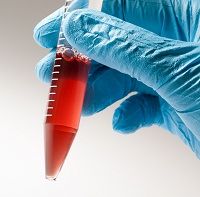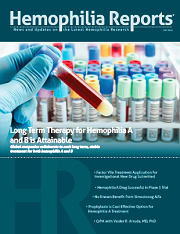Long-Term Therapy for Hemophilia A and B Is Attainable
Global companies collaborate to seek long-term, stable treatment for both hemophilia A and B.

New gene therapy strategies are in development from a joint effort of Biogen Idec, Inc, Fondazione Telethon, and Ospedale San Raffaele, according to a company statement.
The companies will enter the worldwide collaboration with the goal to develop therapies for the treatment of both hemophilia A and hemophilia B. The San Raffaele Telethon Institute for Gene Therapy’s (TIGET) development expertise and strategies will aid the effort along with the existing understanding of hematology that Biogen Idec brings to the table.
“People with hemophilia often require lifelong treatment to control dangerous bleeding, but there is hope that gene therapy could one day lead to a single-dose, lasting therapy,” Biogen Idec’s senior vice president of gene therapy Olivier Danos, PhD said in a press release. “Collaborating with the gene therapy pioneers at TIGET is an exciting step as we build a world class platform in an effort to identify new approaches that could fundamentally change the lives of people with life altering diseases.”
The $5 million in funding will be paid up front to TIGET for the rights to the programs and its development. The team is eligible for more funding based on the achievement of certain development milestones laid out in the terms of the global agreement. Biogen Idec will additionally support 2 programs’ research costs, one for hemophilia A and another for hemophilia B. The company will be allowed to exercise worldwide development and commercialization rights after the first round of safety and efficacy endpoints are assessed in clinical trials.
“This alliance confirms again how the excellent scientific research we are funding can lead to exciting new therapeutic approaches,” the general manager of Telethon, Francesca Pasinelli, continued. “We can say that we have pioneered a model whereby the charity organization acts not only as a funding agency, but plays a primary role in managing the development of research to ensure that each step of the process leads to the ultimate goal, which is to provide accessible therapy to patients.”
The collaboration is hinged on TIGET’s sophisticated lentiviral gene transfer technology — the ability of engineered vectors to deliver functional versions of defective genes responsible for causing specific diseases in the patient’s cells. In clinical trials, this has been promising for the gene transfer into hematopoietic stem cells harvested from patients. The cells are then treated with the vector and re infused into the body. When TIGET uses the strategy in terms of hemophilia treatment, the lentiviral vector is directly infused into the body and targets liver cells. If the technology is proven to be safe and efficacious, it may be a building block for stable therapy for the long term treatment of hemophilia.
“We at TIGET have worked for several years to develop a new vector design that upon administration into the blood stringently targets expression of its genetic cargo to the hepatocytes, the main cell type of the liver,” concluded Luigi Naldini, director of TIGET. “This was crucial to establish long term expression of the therapeutic gene and obtain proof of principle of its therapeutic benefit in experimental models of hemophilia B. We are now delighted to collaborate with Biogen Idec to expand our hemophilia gene therapy program also to hemophilia A and to advance both programs towards clinical testing, always keeping in mind the safety and benefit of the patients.”
